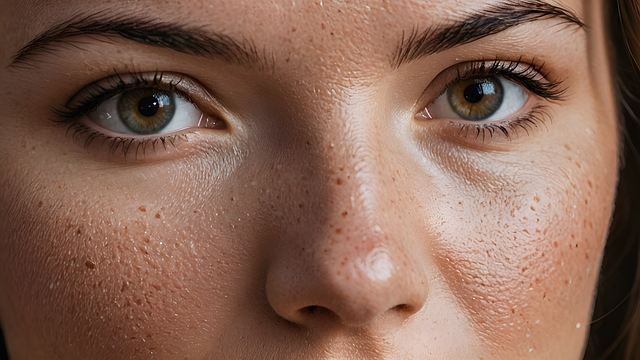Skin tags, medically known as acrochordons, are soft skin growths commonly appearing in sensitive areas due to friction or irritation. Manchester Skin Tag Removal has gained popularity as people seek solutions for their prominent appearance. Non-invasive methods like cryotherapy or laser treatments offer gentle alternatives to surgical excision, especially for face and neck. Persistent tags may require professional surgical removal by qualified dermatologists for permanent results while minimizing risks. Proper post-care is crucial after Manchester Skin Tag Removal to ensure optimal healing without infection or scarring.
Looking to get rid of skin tags in sensitive areas? This comprehensive guide explores effective removal methods tailored for delicate regions, offering both non-invasive approaches and surgical options. From understanding the causes of skin tags in sensitive spots like the neck or armpits to post-removal care tips for swift healing, this article is your go-to resource for Manchester Skin Tag Removal.
- Understanding Skin Tags and Their Occurrence in Sensitive Areas
- Non-Invasive Removal Methods for Delicate Regions
- Surgical Options: When and Why to Consider Professional Help
- Post-Removal Care: Tips for Speedier Healing and Prevention
Understanding Skin Tags and Their Occurrence in Sensitive Areas
Skin tags, medically known as acrochordons, are small, soft pieces of skin that hang off the body’s surface, often appearing as tiny tags or chunks. They are typically harmless but can be a source of concern for many individuals due to their prominent appearance, especially in sensitive areas like the neck, armpits, and groin. Manchester Skin Tag Removal has become a popular search term among those seeking solutions for this issue.
The occurrence of skin tags in sensitive regions is quite common, partly due to the increased friction or irritation in these areas. They often form where skin rubs against itself or clothing, creating a constant gentle pull that encourages cell growth and results in the development of these small tags. Sensitivity and skin conditions like eczema or diabetes can also contribute to their formation, making effective removal methods essential for those seeking comfort and confidence.
Non-Invasive Removal Methods for Delicate Regions
When it comes to sensitive areas, such as the face and neck, removing skin tags safely is a top priority. Fortunately, there are non-invasive methods available that are specifically designed for delicate regions. Unlike surgical excision, which can be risky and leave scars, these techniques offer a more gentle approach. One popular option is using liquid nitrogen, also known as cryotherapy, which freezes and destroys the skin tag. This method is usually painless and effective, making it a top choice for Manchester Skin Tag Removal.
Another less invasive procedure involves laser treatments, which target the blood vessels that nourish the skin tag. By breaking down these vessels, the skin tag becomes weakened and can fall off naturally. Laser therapy is precise and minimizes damage to surrounding skin, making it an excellent alternative for areas requiring delicate care. These non-invasive removal methods are not only effective but also preferred by many due to their safety and minimal downtime.
Surgical Options: When and Why to Consider Professional Help
If skin tags have developed in sensitive areas, it might be time to consider professional help for effective and safe removal. Surgical options for Manchester Skin Tag Removal offer a permanent solution, especially when home remedies or over-the-counter treatments haven’t yielded desirable results. A qualified dermatologist can perform various procedures tailored to the specific location and size of the skin tags.
Choosing surgical removal ensures that the process is meticulous and minimises potential risks, which can be a concern with DIY methods. Professionals use advanced techniques and tools to remove the tags while preserving surrounding skin, making it an ideal choice for delicate areas like the neck, armpits, or groin. This method is particularly recommended when skin tags are causing discomfort, emotional distress, or if there’s a risk of infection or complications from home treatments.
Post-Removal Care: Tips for Speedier Healing and Prevention
After Manchester Skin Tag Removal, proper post-care is essential for optimal healing and to prevent future skin tag formation in sensitive areas. Firstly, keep the treated area clean and dry; gently wash with a mild soap and pat dry, avoiding any harsh rubbing or scratching. Applying a thin layer of antibiotic ointment or a recommended moisturiser can help soothe and protect the skin, reducing irritation.
To promote healing, consider keeping the area lightly covered when bathing or swimming to shield it from direct contact with water and rough fabrics. Avoid picking, scratching, or touching the treated site, as this could lead to infection or scarring. Additionally, maintain good hygiene by regularly changing bandages if needed, and be mindful of any signs of inflammation or unusual discharge that may indicate a potential issue.
When considering skin tag removal for sensitive areas, especially in Manchester Skin Tag Removal clinics, it’s crucial to understand both the procedure’s options and post-care requirements. Non-invasive methods like cryotherapy or lancing offer safe, effective solutions for delicate regions. However, surgical intervention may be necessary for persistent or aesthetically concerning tags. Proper post-removal care, including keeping the area clean and avoiding friction, facilitates faster healing and reduces the risk of reoccurrence. For personalized guidance, consult a Manchester Skin Tag Removal specialist to determine the best approach for your unique situation.
